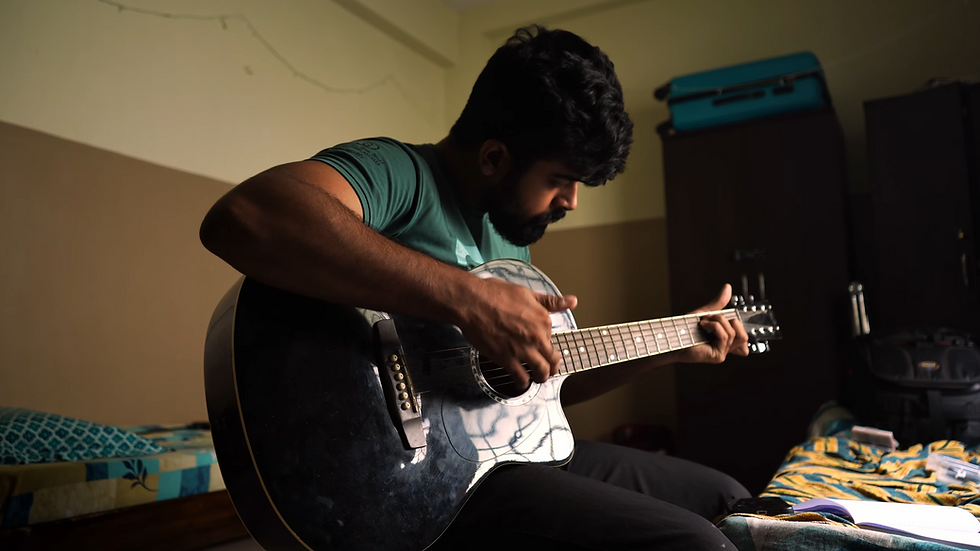Film Review: The Way of The Wind, Directed by Adelaide Rocherolle and Virginie Drouot
- Tokyo Cine Mag

- Mar 11, 2024
- 4 min read

The Way of The Wind is a short film co-written and co-directed by Adelaide Rocherolle and Virginie Drouot. The film begins with a press conference where reporters ask questions from Mae Jemison, the first African-American female NASA astronaut, about her decision to return from space to Earth. The energetic and captivating start to the film leads us to Mae Jemison's past through a reporter's question. Now we can delve into the past as the main character narrates how she became an astronaut, as the director doesn’t waste any time and gets directly to the point. Several important pieces of information are presented in the film from the very beginning: The main character is introduced, and we learn enough about her to be curious about her past. She is the first African-American woman to go to space, therefore, linking issues of women, feminism, and science in a subtle way.
As we take a trip to the past, we see Mae as a child exploring the world with curiosity and excitement. The carefully selected sounds for these childhood scenes and the rhythm of the images transform Mae's childhood into a vibrant and thrilling period. Through Mae's eyes, the world is a fascinating place, and what she experiences as a child gives meaning to her world. These scenes can serve as valuable educational points for adult viewers, highlighting the importance of curiosity and experiential learning in children's lives. The important role of the surrounding environment and suitable space for experiences shape a child's mindset. We witness how Mae's surroundings (and what she experiences) stimulate her curiosity and sensitivity towards the world, leading her to become interested in Earth, the cosmos, and existence in general. By cleverly intertwining key moments from Mae's childhood with snippets of human scientific progress as documentary images, it adds a historical dimension to the flashback.
Alongside emphasizing experiential learning and science in Mae's childhood, there are also references to dancing (as a symbol of art). This blend of science and art shapes a near perfect person like Mae. While highlighting Mae's femininity, the film also sheds light on other aspects of her life, such as her African-American identity. Mae herself narrates her struggles as a black woman on the path to becoming a scientist. Several themes emerge in this journey back to the past in the film: the power of women and the extraordinary strength within every woman to achieve what she desires, the importance of individual will to overcome social issues like racial discrimination and environmental challenges, and the environment which can help a person by preparing them for obstacles and problems ahead.

The film also addresses another crucial theme: how an individual can make choices in his or her youth, from among dreams, desires, and aspirations, and how one can be sure of the correctness of their choices. The film strikes a balance between Mae's intense interest in art and science, drawing a connection between dancing and astronautics. It portrays how one should make the right choices at the toughest point in life when reaching the peak of youth, ensuring that they do not regret their past decisions. The film introduces us to the inner world of the character against the backdrop of Earth and the universe beyond. By moving through time from childhood to adolescence and adulthood and utilizing sounds, the film attempts to show us how vast inner worlds exist within every child that need nurturing for their growth. The inner world created by the film makes us understand the main character's personal struggles as our own, ensuring that the importance attributed to her character from the very first scene never diminishes. The filmmakers successfully maintain the audience's connection with the character throughout this journey.
Alongside all the themes the film presents to the audience, The Way of the Wind strives to be a visual representation of the importance of dreams in every child's life. It conveys the message that children can achieve any dream they have, despite any difficulties and challenges they may face, by fighting, making an effort, and believing. Just as the main character in the film succeeds in making something that initially seemed impossible possible, the dream of every child in the world can come true, as long as belief is present. The Way of The Wind emphasizes the importance and role of this belief. The filmmakers define a simple story with a clear yet profound message, maintaining a consistent tone from beginning to end: that by believing in ourselves and also in our children, we can shape the future. A future that may seem entirely unpredictable today can take shape with these very dreams. LaToya Lynette Rucker's performance as Mae is convincing and completely suitable for her role. The viewer accompanies her and believes in her. Additionally, the cinematography strategically enhances the execution of the screenplay and its themes.
One could describe The Way of The Wind as a film that is both hopeful and instructive, with a highly compelling structure that keeps the audience engaged from start to finish, effectively avoiding any time wastage by maintaining its narrative rhythm. It seems that the filmmakers have employed this strategy in creating this film so that the result of their work can be viewed as an artistic piece and the audience can clearly grasp its main message, making it suitable for viewers of any age. Whether it be a teenage audience who may be dealing with similar issues and problems, or parents of such children who may need to know how to handle their children's dreams and aspirations in similar circumstances.




















Comments